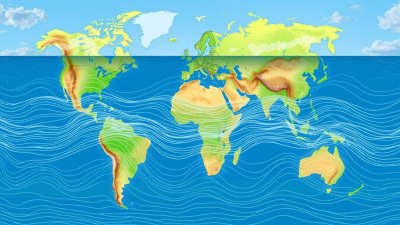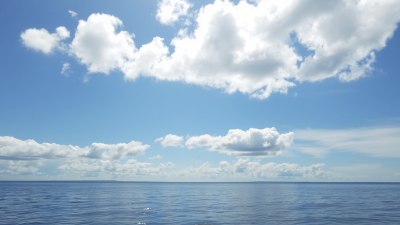The Role of Ocean Currents in Global Weather Patterns
Explore how ocean currents influence global weather patterns, affecting climate, storms, and ecosystems worldwide.

Image created with Flux Schnell
Ocean currents are powerful, continuous movements of seawater that largely determine the climate and weather patterns across the globe. These vast flows of water act as conveyors of heat, nutrients, and gases, connecting the atmosphere and the ocean in a complex feedback loop that shapes environmental conditions worldwide. Understanding the role of ocean currents in global weather patterns is crucial for comprehending how localized climate events can escalate into global phenomena.
What Are Ocean Currents?
Ocean currents are large-scale water movements in the ocean basins. They are primarily driven by wind patterns, the Earth's rotation (Coriolis effect), temperature and salinity differences, and tidal forces. Currents can be surface-level, penetrating only the upper few hundred meters, or deep ocean currents that flow beneath the surface, forming the global conveyor belt known as thermohaline circulation.
Types of Ocean Currents
Surface currents, like the Gulf Stream and the Kuroshio Current, are mostly influenced by prevailing winds and are responsible for moving warm or cold water across vast distances. Deep ocean currents are driven by variations in water density, controlled by temperature (thermo) and salinity (haline), hence the name thermohaline circulation. Both types interact to maintain Earth's energy balance by redistributing heat from equatorial regions toward the poles.
Ocean Currents and Heat Distribution
One of the primary roles ocean currents play in global weather patterns is the movement of heat. For example, the Gulf Stream transports warm water from the tropical Atlantic towards Europe, which moderates the climate of Western Europe, making it much milder than other regions at similar latitudes. Without this heat transfer, Europe would experience much colder temperatures year-round.
Conversely, currents transporting cold water can cool coastal regions. The California Current carries chilly water from the northern Pacific down along the western coast of North America, which leads to cooler and drier conditions in coastal areas. This heat exchange directly impacts atmospheric temperatures, contributing to regional climates and their seasonal variations.
Influence on Atmospheric Circulation
Ocean currents affect atmospheric pressure systems and wind patterns. Warm waters can lead to low-pressure areas due to increased evaporation, which causes more cloud formation and precipitation. Cold currents create high-pressure zones, stabilizing the atmosphere with less precipitation. These pressure differences drive wind patterns that can transport moisture and energy across continents.
Trade winds and westerlies interact with ocean currents to form complex weather systems such as monsoons and prevailing storm tracks. The interaction between ocean currents and atmosphere triggers changes in jet streams that influence weather over vast regions.
El Niño and La Niña Phenomena
Perhaps the most well-known example of ocean currents affecting global weather is the El Niño-Southern Oscillation (ENSO). El Niño phases occur when the easterly trade winds weaken or reverse, allowing warm waters to spread eastward across the central and eastern Pacific Ocean. This disrupts normal weather patterns, causing droughts in some regions and heavy rainfall in others.
La Niña is the counterpart, where stronger trade winds push warm water westward, enhancing upwelling of cold water in the eastern Pacific, thus impacting weather in the opposite way. ENSO events influence precipitation, temperature, and storm activities over the Americas, Asia, Africa, and even globally. These disruptions can lead to agricultural losses, flooding, or droughts, underscoring the ocean-atmosphere connection's vital nature.
Hurricanes and Ocean Currents
Hurricanes draw their energy from warm ocean waters, typically above 26.5°C. Ocean currents contribute by transporting warm water into different regions, priming areas for cyclone development. For example, the Gulf Stream enhances cyclone strength as it flows along the eastern U.S. coast.
Also, currents can influence the paths hurricanes take, steering storms with prevailing oceanic heat distribution patterns. Changes in ocean current temperatures due to climate change may alter hurricane frequency, intensity, and trajectories, posing challenges for forecasting and disaster preparedness.
The Thermohaline Circulation and Climate Regulation
Deep ocean currents form a vast global conveyor belt that circulates water around the planet over centuries. This thermohaline circulation moves cold, salty water from polar regions down into the ocean depths and returns warm surface waters toward the poles.
This deep-ocean process acts like a giant heat pump, regulating the Earth's climate by storing and releasing carbon dioxide and heat. Disruptions in this circulation, such as fresh water influx from melting ice caps, can slow down or redirect currents, resulting in significant changes to the global climate system, including harsher winters, changing rainfall patterns, and sea level shifts.
Ocean Currents and Marine Ecosystems
Currents facilitate nutrient transport from deep waters to sunlit surface layers, supporting plankton growth—the base of the marine food chain. Upwelling currents bring nutrient-rich cold water to coastal areas, making them some of the world's most productive fishing zones. These nutrient cycles are tightly linked to ocean currents and influence global biodiversity and fisheries.
Shifts in ocean currents due to climate variability can disrupt these nutrient supplies, impacting fish populations and communities that depend on them. Moreover, currents help spread marine species, aiding genetic diversity but also facilitating the spread of invasive species and pathogens.
Impact of Climate Change on Ocean Currents
Global warming affects ocean temperatures and salinity, potentially altering current strengths and directions. Reduced polar ice affects salinity gradients essential for thermohaline circulation. For example, increased freshwater influx from melting glaciers can weaken the Atlantic Meridional Overturning Circulation (AMOC), a key part of the conveyor belt.
This weakening may lead to cooling in parts of Europe and North America and disrupt established weather patterns worldwide. Scientists are closely monitoring these currents to predict future climate scenarios and adapt accordingly.
Technological Advances in Studying Ocean Currents
Modern instruments such as Argo floats, satellites, and autonomous underwater vehicles help scientists measure temperature, salinity, and current velocity in real time. These data improve weather models and climate forecasts by incorporating ocean dynamics more precisely.
Global ocean observing systems and international collaboration allow for continuous monitoring, which is critical for understanding how ocean currents respond to natural variability and anthropogenic influences.
Ocean currents play a fundamental role in shaping global weather patterns by redistributing heat, influencing atmospheric circulation, powering weather phenomena like hurricanes, and regulating the Earth's climate system. Their intricate interactions with the atmosphere and marine ecosystems highlight the oceans' central importance to life on Earth. As climate change continues to alter these currents, understanding their dynamics remains a priority for accurate weather prediction and climate mitigation strategies worldwide.











